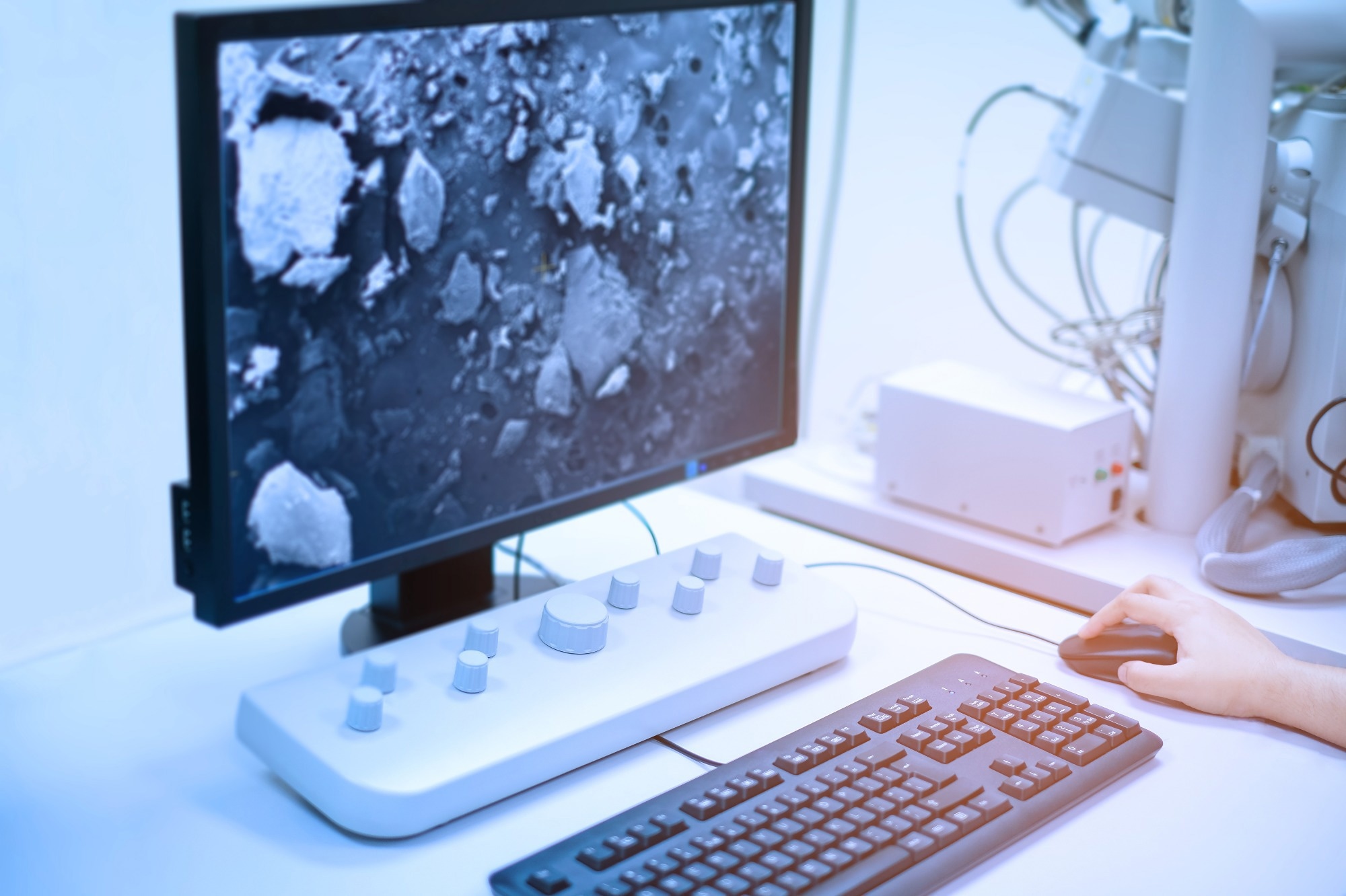A recent article in Scientific Reports explored the antibiotic resistance properties of a nanocomposite combining doxycycline, a widely used antibiotic, with silver nanoparticles (AgNPs) synthesized using chitosan, a biocompatible and biodegradable biopolymer. The study aimed to evaluate the potential of the doxycycline/AgNPs nanocomposite to enhance antibacterial activity against both Gram-positive and Gram-negative bacteria, addressing the growing need for more effective antimicrobial agents.

Image Credit: Anucha Cheechang/Shutterstock.com
Background
Doxycycline, a broad-spectrum antibiotic, is widely used to treat bacterial infections but faces reduced efficacy due to the emergence of resistant bacterial strains. AgNPs have gained attention for their antimicrobial properties, attributed to their high surface area and ability to release silver ions.
Chitosan, a natural polymer derived from chitin, acts as a stabilizing agent for nanoparticles and enhances their biocompatibility. Combining doxycycline with AgNPs seeks to harness the strengths of both components, potentially creating a synergistic effect that improves antibacterial efficacy while reducing toxicity.
The Current Study
The synthesis of chitosan-stabilized AgNPs was conducted using a green synthesis approach. A 1% (w/v) chitosan solution, prepared by dissolving chitosan in acetic acid, served as both the reducing and stabilizing agent for silver ions.
The study adopted a systematic methodology to synthesize and characterize the doxycycline/AgNPs nanocomposite. The AgNPs were synthesized through an environmentally friendly process utilizing chitosan for stabilization and reduction.
The synthesized AgNPs and the doxycycline/AgNPs nanocomposite were characterized using various analytical techniques. Ultraviolet-visible (UV-Vis) spectroscopy was used to assess optical properties, with measurements recorded over a wavelength range of 200 to 800 nm using a Cary 5000 spectrophotometer. Transmission electron microscopy (TEM) was employed to examine nanoparticle morphology and size distribution, with samples prepared on copper grids and imaged at an acceleration voltage of 200 kV.
Antibacterial activity was evaluated using the agar well diffusion method. Bacterial strains, including Staphylococcus aureus, Streptococcus mutans, Escherichia coli, and Klebsiella pneumoniae, were cultured in Muller Hinton Broth (MHB) to a standardized optical density. Agar plates were prepared with wells into which 100 µL of doxycycline, AgNPs, and the doxycycline/AgNPs nanocomposite were added. Following 24 hours of incubation at 37 °C, zones of inhibition were measured to assess antibacterial efficacy.
Results and Discussion
The results demonstrated that the doxycycline/AgNPs nanocomposite exhibited significantly enhanced antibacterial activity compared to doxycycline alone. The UV-Vis spectroscopy analysis revealed distinct absorption peaks for both doxycycline and AgNPs, indicating the successful formation of the nanocomposite. The red shift observed in the absorption peaks suggested a strong interaction between doxycycline and AgNPs, which may contribute to the improved antibacterial properties.
TEM images confirmed the spherical morphology of the synthesized AgNPs, with a uniform size distribution, indicating successful synthesis and stabilization by chitosan. The antibacterial assays revealed that the MIC and MBC values for the doxycycline/AgNPs nanocomposite were lower than those for doxycycline alone, indicating a synergistic effect. The enhanced antibacterial activity can be attributed to the combined action of doxycycline and silver ions released from the nanoparticles, which disrupt bacterial cell membranes and inhibit essential cellular processes.
The study highlighted the potential of the doxycycline/AgNPs nanocomposite to address antibiotic resistance. Incorporating AgNPs improved antibacterial activity and provided an approach to target resistant bacterial strains. These results are consistent with previous research showing that AgNPs can enhance the effectiveness of antibiotics.
Conclusion
This study demonstrates the enhanced antibacterial activity of doxycycline when combined with chitosan-stabilized AgNPs. The successful synthesis and characterization of the doxycycline/AgNPs nanocomposite highlight its potential as a strategy to address antibiotic resistance. These findings emphasize the value of nanotechnology in developing new antimicrobial agents.
Future research should focus on in vivo studies to assess the therapeutic potential and safety of the doxycycline/AgNPs nanocomposite, advancing its application in treating bacterial infections. This research contributes to the understanding of nanotechnology's role in medicine, particularly in improving the effectiveness of conventional antibiotics.
Journal Reference
Mostafa EM., et al. (2024). Reducing the effective dose of doxycycline using chitosan silver nanocomposite as a carriers on gram positive and gram-negative bacteria. Scientific Reports. DOI: 10.1038/s41598-024-78326-1, https://www.nature.com/articles/s41598-024-78326-1